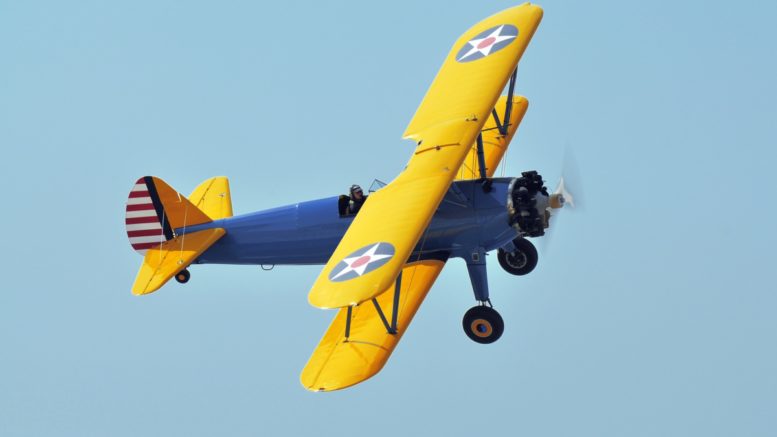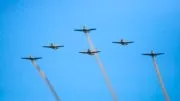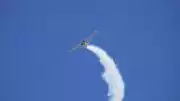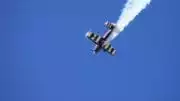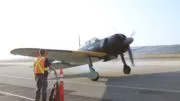Airshows don’t just take place on the airshow date. Before an airshow can take place, training must be carried out for airshow stunts. The inflight pilot training process for airshow stunts involves safely practicing the different stunts, like loops, lines, and rolls, to perfect the aerobatic stunts. Aerobatic maneuvers require flying in unusual altitudes, and this is no easy feat to accomplish. So, as a result, airshow pilots must train to prepare for the big show ahead to ensure a successful and safe airshow.
Inflight Pilot Training for Airshows
A stunt pilot must begin training at least a month before the airshow. This ensures that all stunts are well practiced and that the pilot gets familiar with the arena before the airshow.
Stunts require more skills than regular flights, so a stunt pilot must continually practice before the airshow. Constant practice is key to accomplishing safe and impressive airshow performances. It is also one of the ways to increase g-force tolerance before an airshow.
While training, an airshow pilot must consider keeping sufficient distance from the spectators. Maneuvers should refrain from directly facing the viewers to ensure their safety in case an accident occurs.
Inflight Pilot Training: Airshow Preparation
Energy Management
According to the FAA handbook, energy management is the process of planning, monitoring, and controlling altitude and airspeed targets in relation to the airplane’s energy state to:
- Attain and maintain desired vertical flight path-airspeed profiles.
- Detect, correct, and prevent unintentional altitude-airspeed deviations from the desired energy state.
- Prevent irreversible deceleration and sink rate that results in a crash.
Simply put, it is how pilots manage and monitor altitude and airspeed. An airshow pilot has to manage energy from takeoff to landing. This is why airshow pilots must constantly train, as proper energy management will determine the safety of airshow stunts.
Managing energy involves balancing altitude and airspeed. Though aerobatic flying requires a lot of daring stunts, care still has to be taken. Also, during airshow rehearsals, display marshalls help fine-tune maneuvers to ensure that airshow pilots are at their best.
Strength Training
Airshow pilots engage in fitness routines and aerobic and anaerobic exercises to stay fit and improve their g-force tolerance.
Limit Testing
Training is about testing limits and seeing how far a pilot and the plane can go. Constant training before an airshow improves the pilot’s limit.
Visualization
Visualization has become an essential part of airshow training. It involves mental practice before an airshow and improves motor performance through imagery. What you visualize affects your actual motor preparation and execution process. It involves practicing emergency procedures, visualizing the flight from start to finish, etc.
Working On Errors
Airshow pilots note errors during stunts to know what they can improve and ensure safety. Good airshow pilots try not to repeat a particular error and train toward perfection.
Safety Measures For Inflight Pilot Training
If there’s anything as crucial as performing stunts, it’s taking safety measures. Stunt flying can be dangerous. While accidents are rare, they can occur if one doesn’t take the necessary steps to prevent them during training.
Preflight Checks
Even before a stunt show begins, there are some measures a pilot needs to take to ensure their safety. These are:
- Pilots check if they are physically and mentally stable to fly: Being ill or stressed can negatively affect airshow stunts, so it’s best not to fly an aircraft in such states. G-force can cause problems if one isn’t focused and healthy, so stunt pilots who pull a lot of airshow maneuvers must be in good health.
- Waiting for Clear Weather: Bad weather can obscure visibility and make flying dangerous. So, before an airshow stunt training, the pilot must ensure the weather is fair enough for aviation.
- Know Yourself and Your Limit: Airshow pilots need to know their limits. Stunt planes also have their limits, and the pilot must try to stay within the plane’s limit to avoid accidents.
In addition, there are several other safety measures to consider.
- Checking if the cockpit is free of loose objects
- Ensuring the seat belt is locked and tight
- Inspecting the engine instruments
- Staying hydrated
- Wearing a parachute during flight
- Not flying over congested towns or cities
- Not flying over an open assembly of persons
- Using flight simulators to train and perfect their techniques: Flight simulators are especially helpful when pilots haven’t mastered their stunts. It provides a safe training platform for them.
Skills Needed For Inflight Pilot Training
Aerobatic Maneuvers
Of course, a pilot can only perform in an airshow with maneuvering skills like loops, lines, rolls, and spins. Not all stunt pilots have these skills; however, they must have one or two because these maneuvers are to be performed to engage and impress the spectators.
G-force Tolerance
G-loading or acceleration can cause gray areas, vision loss, and even loss of consciousness. G-force affects the blood vessels; only a stunt pilot with sufficient g-force tolerance is considered airworthy. This is because g-loads can lead to accidents if a pilot has not trained the body to withstand high force.
Confidence
Confidence is vital for aerobatic pilots. They need to own the plane and the show to achieve such daring stunts in front of the crowd. A confident pilot can pull incredible stunts and be enthusiastic about learning more.
Emergency Descent
Stunt flying is not only fun but dangerous as well. While many airshows have been conducted safely, some crashes and accidents have occurred, leading to pilots’ and spectators’ death. Learning to make an emergency descent is a skill needed to reduce the chances of a possible accident.
Emergency descent is a maneuver for descending as quickly as possible to a lower altitude or the ground during an emergency landing. This will be necessary in case of fire, loss of cabin pressurization, etc. So, every stunt pilot should possess this critical safety skill.
Key Takeaways For Inflight Pilot Training
Stunt flying can be dangerous for spectators and the pilot if proper training is not carried out before an airshow. Airshow pilots must constantly train in flight to ensure that they perfect their stunts for a successful airshow to be possible. However, even during the airshow stunt training, safety measures need to be observed to prevent accidents.
Ready to Soar with Us?

